2016 will be the year where VR has finally landed for sure. It’s going to bring some fresh air & innovation to video games. It was about time! Everybody in the gaming industry, hardware manufacturers & software vendors are jumping into this new adventure.
Oculus has probably been the first one to really make it real for a lot of people via DK1 & DK2 dev units followed by HTC with the Vive headset. Google with its Cardboard has even found a way to make it accessible to anybody having a smartphone! They have also recently announced their Daydream platform for Android, a really interesting approach to VR. Finally, last but not least, Sony will launch its VR solution with the PS4 at the end of the year and Microsoft will support VR with the Xbox Project Scorpio supporting also 4K gaming end of 2017. E3 2016 had lot of announcements around VR, you can read this great summary to know more about it: All The Virtual Reality News From E3 2016 In One Post
This is then getting more than serious. From high-end solutions on PC (Oculus & HTC Vive) to low-cost solutions (Cardboard, Gear & Android) through consoles, everybody will be able to experience a VR experience in 2016. Still, some people I’m discussing with, including some working in gaming studios, are still skeptical about VR. I’m definitely not. I really think its potential is just huge for the industry. The experience is incredible. But its success will be principally based on the quantity & quality of the content provided (on Steam & consoles) as well as a new generation of gameplay that still need to be defined. Please, creative minds, it’s now up to you to shape the next step of video gaming!
From Virtual Reality 2016: Top 100 Influencers and Brands and PitchBook Virtual Reality 2015 Analyst Report
But VR is not only about gaming. It can be used to watch much more immersive movies in a complete new way. It can also be used to train people. It can be used for medical purposes. Imagine also going to a travel agency, put a VR headset and have a preview of your next vacation’s trip? There are a lot of new opportunities.
On my side, I’m dreaming about VR since I’m a young child. I’ve always been a gamer, starting playing on my Atari 800XL computer & 2600 console. I’ve played and discovered all types of video games. Some of them will remain in my memory for ever: Space Invaders, Super Mario, Xenon 2, Monkey Island, Leisure Suite Larry, Alone in the Dark, Mario Kart, the 7th guest, Myst, Wing Commander, Doom & Duke Nukem, Worms, Half Life, Dune 2, Resident Evil. I’ve shared all the games that I really loved in this (French) article. And if you’re reading French, you’ll probably shocked to see I don’t like RPG including Zelda. 😉
But to be honest, for a couple of years now, I’m less excited by video games. I’ve got the feeling that innovation has stopped, except maybe sometimes in the indie video gaming industry. To my point of view, the two last big technical innovations came with Internet which brought (massive) multiplayers games and with motion gaming (Wii & Kinect) which, to be honest, wasn’t the success everybody had hoped. It’s been time since we didn’t have something breaking-through. Something that we really never experienced before and could change the way we’re playing to our video games. It’s true that we’ve globally improved the quality of the graphics to reach photographic fidelity using powerful GPUs and by using multi-cores CPUs to have slightly better AI and physics engines. But still, the global gameplay hasn’t changed a lot. We’re still playing FPS in the way we were playing them 20 years ago, we’re still playing platforms games in the same way for ages (they switched to 3D with N64) and we’re playing to STR games in the very exact same way. Kinect and Wii have managed to target a new type of gamers but hardcore gamers like us are more or less playing to the same games in the same way for now a long time.
From Virtual, Augmented and Mixed Reality are the 4th Wave of Digital Technology
My first VR experience was 20 years ago. I was able to test Heretic (based on the Doom engine from ID software) inside a VFX-1 headset during a gaming consumer show in Paris. I was so excited by the idea of testing this!
It’s then a good moment to remind you that VR is far from being something new! 20 years ago, we were already able to play Quake in VR for instance:
But quickly, lot of issues came to my attention: poor resolution, head tracking was very laggy and globally the experience wasn’t nice at all. Motion sickness was all around.
Note: it’s fun to see that Bethesda recently announced they will soon bring Doom to VR and to the Vive. I’ll be able to compare my previous experience with this future modern version 😉
To give you an idea, here are the VFX-1 specifications from Wikipedia: “dual 0.7″ 263 x 230 LCD displays capable of 256 colors. Optics comprised dual lenses with adjustable focus and interpupillary distance. Field of view was 45 degrees diagonally”. 263×230 with the very first generation of LCD with 8bit graphics… You bet the experience wasn’t good at all! 😉
Sci-fi movies had generated high expectations. Do you remember for instance Lawnmower Man with Pierce Brosnan or Disclosure with Michael Douglas & Demi Moore? 🙂
So, my first “real” experience was horrible.
But I was still hoping that, one day, this technology would be good enough to make it a great experience. To be honest, I wasn’t expecting it would have taken so long… but here we are! 20 years later, we’re finally in the VR generation!
I’m lucky enough to had the chance to test several of the top VR/AR experiences currently available: Oculus, HTC Vive, HoloLens and Cardboard. 2 of them have definitely impressed me more than I could have expected: HoloLens and the HTC Vive.
Testing the HoloLens is like testing something completely magical. The mixed reality provided by the headset is just insane. You have to test it to believe it. Really. The spatial tracking & mapping of your environment is incredible. You can put some holograms anywhere and everything works as you’d expect, including occlusion of the holograms by the real objects in your field of view! As a developer, when I first coded on the headset using Unity, I was also amazed by the simplicity of the development process. The headset is also a complete Windows 10 PC and you then don’t have any cable attached to it. You’re completely free of moving inside any place. This level of freedom and the mixed reality offered by spatial tracking is really what makes it different from any other solution. There is no equivalent. At last, the first time you’ll see a hologram physically interacting with a real object of your environment (by bouncing on it for instance using the physic engine), you’ll be like a child and you’ll be totally amazed. I’ve been a geek, coder & gamer for more than 30 years and I never experienced something else as incredible as the HoloLens. It will definitely shape the future of computers.
However, for now, HoloLens is more targeting B2B scenarios (even if there is a great game developed by Asobo Studio on it). I was looking for a new gaming experience available today.
Windows Holographic: Enabling a World of Mixed Reality, demonstrating an experience built for both HTC Vive & HoloLens.
My HTC Vive journey
While preparing the //BUILD keynotes in backstage, I’ve then started discussing about that with my good old friend David Catuhe with who I’m coding Babylon.js, our 3D WebGL gaming framework. He immediately told me to have a look to HTC Vive rather Oculus because of the room scale and because of the 2 controllers shipped by default with it. I’ve then started to read all reviews on the web as well as all videos on YouTube. Everybody indeed agrees on the fact that the Vive is the best experience available today as long as you’ve got enough space to enable room scale. Oculus said they will ship a similar experience at the end of this year with Oculus Touch, but they seem to still have issues shipping the main device and the technology they’re using, even if it looks really cool, won’t apparently offer 360° tracking but “only” 180°. Anyway, when I started getting interested in buying a VR headset in April, only the Vive was supporting what I was looking for.
Room scale brings you the ability to physically walk into your play area. You’ll be tracked by 2 cameras that will be able to see also the 2 controllers. Thanks to that, you can perfectly see the 2 controllers inside the VR world. The tracking is very accurate. It’s so good that if someone would throw them to you, you’ll be able to catch them without issue while wearing the headset. Still, I don’t recommend trying that. 😉
Being able to see the 2 controllers and walking in the virtual world is really making a huge difference. Controllers could be displayed as they’re really physical look in the real world or be displayed as a gun, sword, laser saber, shield, etc. Compared to a “simple” VR experience when you’re only moving your head to look into the environment, being able to see something attached to your hand and be able to walk a bit in the room makes it much more real. Sometimes, “simple” VR experiences are really weird as you can’t see any part of your body and you can just suffer what’s going on. Adding this level of interactivity increase a lot the immersion. We then immediately start thinking about the next steps to better track your body (hands, arm or even your complete body with Kinect for instance) and maybe in a couple of years some kind of force feedback. In the meantime, the HTC Vive is providing a very immersive experience that I truly love.
Note: this magically experience is due to the awesome work done by Valve much more than by HTC. Read this very interesting article Exclusive: See the Secret Prototypes We Found in Valve’s VR Lab that uncover how Valve has transformed their early prototypes to an industrial product with HTC.
To have an idea of this level of immersion, I think this mixed reality video is the best way to imagine what you’ll feel when you’ll test it by your own:
And for even more immersive experience, there are already some ongoing experiments:
Manus VR gloves reveal arm tracking for HTC Vive – how will we be better tracked into the VR world in the future?
And probably the most craziest one is the Virtuix Omni where you can literally walk & run inside the VR world!
You’ll find plenty of other walking devices here: http://www.vrwalkerproject.com/existing-systems.html. Some of them are fun to watch but way to big & expensive for mass market!
Setup and PC configuration considerations
Even if there are a lot of cables to connect, setting up the Vive is relatively straightforward and the tutorials of the setup application are really well made. If you’d like to have an idea of the process, watch those videos:
– Vive – Set up Vive for Room-scale
– Vive – Adjust the headset strap
– Vive – Adjust the lens distance on the headset
– Vive – Adjust the distance between the headset lenses
As you can see in the 3th video, you can wear glasses without any problem. I’m wearing glasses and I’m really comfortable inside the headset. I’ve just slightly adjusted the headset to have a bit more room for my glasses, something the Oculus can’t do today. And, in my case, it really changes the global quality of the rendering making it less blurry on the edge.
On my side, I’ve decided to put the motion trackers in my living room and I’m moving my PC from my desk room every time I’d like to play with it. It takes me 5 min to move and connect the cables, so it’s ok.
Let’s be honest: you need a powerful PC if you’d like to fully enjoyed either the Oculus or the HTC Vive. They both have OLED display with a resolution of 2160×1200 running at 90 Hz with a FOV (Field Of View) of 110 degrees. And to be even more precise, both the Oculus and the Vive are doing a default supersampling of 1.4 to finally render images at 3024×1680. I’ve tested increasing this supersampling for you in the benchmark section.
Note: you can change this supersampling value if you’ve got enough power (980ti or 1080). For the Vive, this is the procedure to follow. For the Oculus, this is the one to use.
Driving that amount of pixels at 90 fps requires either a very powerful GPU or very simple graphics. I’m quoting those lines from this nVidia document Gameworks VR by Nathan Reed: “Virtual reality is extremely demanding with respect to rendering performance. Both the Oculus Rift and HTC Vive headsets require 90 Hz, a very high framerate compared to gaming on a screen. We also need to hit this framerate while maintaining low latency between head motion and display updates. Mike Abrash at Oculus has done some research on this, and his results show that the motion-to-photons latency should be at most 20 milliseconds to ensure that the experience is comfortable for players.“
It then adds a lot more money to the already relatively expensive headsets. On the GPU side, it starts with at least a nVidia GTX 970 and it’s recommended to better have a GTX 980. This means that globally, your budget needs to be around 1500/2000€ to have the full VR setup (headset + the PC).
On my side, my PC got two nVidia GTX 980 (+150 Mhz overclocked) and an Intel 5960X CPU (overclocked to 4.0 Ghz). This machine has been built almost 2 years ago to be able to play to 4K games. I’ve blogged about it (in French). It’s supposed then to be more than ready to welcome VR.
Still, today, all VR games & experiences I’ve been testing are only using 1 of my 980 GPUs. Hopefully, one 980 is really enough to provide smooth rendering of today’s VR games. In the Gameworks VR document shared above, you’ll see also that nVidia has been working on using SLI configurations in the best way for VR. The global idea is to render a left eye frame on the first GPU and the right eye frame on the second GPU.
It looks very promising but I don’t know any game using this feature yet. And to be honest, I’m almost sure that few, if no game, will benefit from that.
I’m far from being happy in having invested into my SLI configuration. I think every game that shipped recently had issues with SLI on day 1. You’ve got to wait for several months to have SLI configurations supported correctly by both the nVidia driver and the game itself.
For instance, the last big AAA game out, Doom, still doesn’t support SLI (even if it seems to work in my case as shared in this tweet and on the steam forum). I’ve bought my 2 GTX 980 to play to 4K games and even if it has enough power to drive them smoothly thanks to g-sync, the software support is not there. My guess is that’s better to invest into the new GTX 1080 alone for future AAA VR experiences rather than any kind of SLI/Crossfire. Hopefully, today, a unique 980 is able to drive all existing VR content available for the Vive. But running AAA games in 4K at 60fps is more or less equivalent to running the same game in VR at 90fps due to the super sampling resolution mentioned above. This means 2 possible options: the future AAA games visual quality in VR will be less impressive than the 2D version (less special effects, less high-res textures, simpler shaders and less vertices) or only a future potential GTX 1080ti beast will be able to support the same AAA game in VR. Ah yes, there is a 3rd option I don’t really believe in: massive usage of SLI by VR developers.
Note: if you’re interested in going deeper on the performance required and also about SLI support, go read this awesome thread: Can we establish the real facts about PC hardware for VR?
On my side, following the above explanations, I’ve then decided to sell my SLI of GTX 980 to switch to a GTX 1080, the Palit GTX 1080 GameRock Premium Edition. As you can see in this Guru3D review, it’s probably one of the best, if not the best, current GTX 1080 card available.
Some benchmarks GTX 980 vs SLI GTX 980 vs GTX 1080
During their press release, nVidia had claimed that the new GTX 1080 was faster than 2 GTX 980 working in SLI.
Really???
I was a bit surprised by that, so I wanted to check it by myself. 🙂
For that, I’ve configured my system like that:
– Intel 5960X @ 4.00 Ghz (40×100)
– Asus X99 Deluxe + 16 GB RAM
– Windows 10 build 10586.420
– nVidia driver: 368.39
– Gainward GTX 980 (reference design aka known as “founder edition” now ;-))
– Palit GTX 1080 GameRock Premium Edition
I’ve first done some tests on a single GTX 980, then still with a single GTX 980 being overclocked to +125 Mhz both on core & memory (using MSI Afterburner), then on 2 GTX 980 with the default clock, then both overclocked to +125 Mhz, finally on the GTX 1080 using default clock of the Palit and slightly overclocked to +40 Mhz on the GPU and +200 Mhz on the memory.
Please note that the Palit GTX 1080 GameRock is already overclocked out of the box to:
– Core Clock: 1746 Mhz instead of default 1607 Mhz on a founder edition card
– Boost Clock: 1885 Mhz instead of default 1733 Mhz on a founder edition card
– Memory Clock: 5250/10500 Mhz instead of 5005/10010 Mhz
My tests were done on:
– 3D Mark 11 using Performance mode (720p)
– 3D Mark Fire Mark Ultra in 4K
– Tomb Raider 2013 in 4K Ultimate mode taking the average fps.
Here are the results:
Conclusion: a GTX 1080 is at best as fast as a 2 SLI GTX 980 if the GTX 1080 is well overclocked and if the 2 GTX 980 are running at the default clock speed. As soon as I’m overclocking my 2 GTX 980, the GTX 1080 can’t reach the performance level. Note also that this cool Palit GTX 1080 card is able to maintain a boost clock over 2000 Mhz, being most of the time around 2038 Mhz, sometimes 2050 Mhz. I guess it’s better than a founder edition model but you’ll tell me.
Still, I admit it’s very impressive even if, for me, nVidia has lied a bit.
However, this also means that we’ve got this huge power available whatever the game or 3D experience is supporting. In my case, I was interested in two of those cases: VR and WebGL.
Overview of the supersampling effect and performance cost
Now that I’ve got a GTX 1080, I’ve got enough power to test improving the quality of the rendering inside the headset by increasing the supersampling default value from 1.4 to 2.0 and 2.5. It seems that this value impacts all games from Steam but some of them seems to have their own way to increase this multiplier like inside Raw Data for instance.
I’ve done a couple of tests switching from the default value, to 2.0, 2.5 and 3.0. The quality of the image is really improved starting 2.0. Everything is more sharp and clear. You can better read the texts and globally you can feel some better graphics which helps to improve the immersion. To be honest using 2.5 and 3.0, I haven’t seen some real differences on the quality of the rendering inside the headset. However, for the time, I’ve felt some sickness after switching to 2.5+ which probably means that I had some FPS drops which could lead to some sickness. I woudn’t recommend going further than 2.0 then as, to my point of view, it doesn’t show some real improvments on quality anyway.
I’ve tried to use MSI Afterburner to check the impact on GPU usage, FPS and memory usage while switching from a value to another. Here are some screenshots in the Labs using 1.4, 2.0 and 2.5:
Using 1.4: FPS at 90, GPU usage at 32%, Memory usage at 4145 MB.
Using 2.0: FPS at 90, GPU usage at 75%, Memory usage at 5516 MB.
Using 2.5: FPS at 90, GPU usage at 71%, Memory usage at 6407 MB.
Also, in 2.5, FPS started to be inconsistent also. I’ve seen some FPS drops.
Bottom line: you need at least a GTX 980ti to go over 1.4 because you need more than 4 GB of memory and you also need enough GPU power to compute the higher resolution.
Games & experiences tested
Globally, I never felt sick nor tired while playing to the Vive even after a couple of hours inside the headset. I remember having played once for at least 3 hours in a row without any problems. It really changes from my first tests on the DK1 where I was sick sometimes for 1 hour after just having been using the headset for a couple of minutes… Still, I’m usually not playing more than 1 to 2 hours and I’m not sure VR will be played more than much. Indeed, compared to classical games (console or PC), the experience is much more immersive and you’re standing in the room rather than being sit on your sofa. It then requires more attention and energy. Still, as I told you, I was very surprised to be able to play for 3 hours without being tired. The only concerns I have: sometimes it’s relatively hot in the headset which could make you sweat and you have to pay attention to the cables a bit if you’re making too many circles on yourself.
Note also there is a screen door effect. Fortunately, based on the experience you’ll test, you’ll quickly forget it. It’s usually really not a problem while in game. Still, it could be sometimes annoying on some of them, specifically to read texts. To address that, using the 2.0 supersampling value has really increased the global quality inside the headset in my case.
I now have the headset at home for 2 months and I’m still really impressed by the experience it provides me each time. It’s really something different from any other gaming experience I had and I really love it. The content is getting better and better even if most of it will land in the upcoming months.
Free experiences
There’s a bunch of cool free VR Vive experiences I’ve tested on steam.
The Lab
It’s probably the best free experience and also one of the best experience all up. You can download it there. It has been made by Valve to showcase what kind of gaming experiences you may have in the future and to give you an idea of the potential of the Vive. It’s really impressive with great graphics and smart interactions. My favorite experience in The Lab (and the favorite one of all my friends who tested it) is the Longbow demo which is a tower defense like mini-game where you can send some arrows on enemies on top of a tower of your castle. You’re using the 2 controllers to do archery.
Here a video of me playing it:
I could play this mini-game for hours which means that even with simple graphics, a good VR gameplay is just incredible.
There’s plenty of other great experiences in the lab. My second favorite one is the Xortex demo, a shoot’em up like game where you’re controlling a mini-space ship which is stuck to your hand/controller. You then have to move your hand in the 3D environment to avoid being shoot by enemies, moving through the lasers and shooting the various bombs sent against you.
The most visually compelling one is a fun experience using the universe and assets from Portal 2. You have to try to fix a damaged robot by opening it with the controllers. It’s simply beautiful and gives an idea of professional applications where you could imagine training your employees fixing real machines.
There are other interesting mini-experiences. You should really test all of them as I really think Valve has done an awesome job compiling lot of different ways to showcase the potential of the Vive and VR room-scale. It will also show you that the gameplay and experiences really need to be define for VR and best, for room-scale. In The Lab, this will be also your first time where you’ll learn a basic way of moving inside the scenes using teleportation. For that, you have to point to an area and press one of the button of the controllers. Indeed, even if you have a big room, you can’t walk indefinitely into the 3D scene. So, all actual room-scale experiences are using this trick: you’re jumping from a squared area to another using teleportation. This works but it’s not the best immersion part of the Vive. It tends to remind me I’m not free of exploring the scene as I would do in real life. But it globally works well.
Disney Movies VR
Disney Movies VR is also a free experience. It’s not a room-scale VR experience but a “classic” VR one like you can currently have on the Oculus. Still, I really enjoyed some of the VR movies offered. The 2 best one by far are the one extracted from the Jungle Book movie. The first one, you’ll be on top of a very big & tall tree where the snake will talk to you, slowly getting nearer to finally jump on you. It’s really strange. Even if you know it’s not dangerous, you’ll be a bit scared by this last moment. The second one I’d liked is a sequence inside a cavern with lot of monkeys. The level of immersion is incredible and the way 3D sounds are used to attract your attention is really interesting. You’ll better understand that creating VR movies could be a challenge as you’re free of looking anywhere you’d like. The director then needs to find tricks to make you look at a specific direction (using 3D sounds) or to provide something interesting to look at, whatever direction you’ll be looking at. Apart those 2 sequences, I didn’t really enjoy the other one. Even if I’m a StarWars fan, the 2 sequences are not really interesting, even worse, one of them where you’re supposed to be on top of a flying machine made me a bit sick as well as other of my friends who tested it.
Tilt Brush
It shipped with my HTC Vive so I could consider it as “free” ;). The job done by Google is truly impressive. I’m not sure there is any equivalent. This is a 3D drawing / sculpting like experience that could free the mind of artists in a completely new way. You just have to search on the web to find some of them building beautiful stuff with it. The UI/UX is very smart using the controllers is a very clever way. Unfortunately, on my side, I’m a very pool drawer in 2D or 3D, so you won’t be surprised to know that I’m a very pool VR drawer in Tilt Brush. Still, the experience is really great as I never tested something similar in the past.
Job Simulator / Fantastic Contraption
It’s fun but I wouldn’t have paid for this two games. I was quickly bored while playing to Job Simulator and Fantastic Contraption is an interesting concept of a puzzle VR game but I didn’t want to spend that much time in it.
Others
nVidia VR Funhouse and StarWars Trials on Tatooine by ILMxLab. Both looks great! But I haven’t been able to test them yet. I’ll update the article to share my impressions. The nVidia one required at least a GTX 980ti or even better a 1070/1080. Trials on Tatooine seems to be the experience I was dreaming as a StarWars fan!!! 😀
Paid experiences
Raw Data
I’ve been waiting for this one since I’ve read the first review articles and videos. It’s been over my expectations. It’s currently in early access but trust me: it is BY FAR the best experience currently available on the HTC Vive! The quality of the graphics (if you’ve got enough power to set all options to max) and the level of immersion are insane. Shooting attacking robots, drones, covering yourself and re-charging while being surrounded by a lot of enemies coming in all directions (including from the top for the drones) is really a challenge… but so exciting! You’ll be really more stressed than ever. No video game before provided me this level of feelings and excitement. There are still some bugs, I had really weird one while using the saber for instance but for a beta, it’s already something you have to test if you’ve got a Vive.
Space Trainer
One of my favorite mini game. Very simple graphics but amazing shooting experience with really awesome music everybody enjoyed while playing it. It worth the money. All my friends really loved it.
Vanishing Realms
This is a RPG game. Yes, I know. I told you I don’t like RPG games at the beginning of this article. Still, this is also one of the best experience I’ve tested! I really enjoyed it and it provides several great gameplay mechanisms: fighting with a sword (you can upgrade it with some money), digging some gold on the walls, sending arrows on enemies, using some mana for some magic weapons, etc. It’s a perfect showcase of what could be a great RPG game using room-scale in the future. I was the first one to be surprised to enjoyed this game and went through the first level with no pause.
The Gallery – Episode 1: Call of the Starseed
Call of the Starseed is a very beautiful experience that reminds me Myst. You’re arriving on an island in the middle of nowhere and you’ve got no idea of what you should do. The graphics quality of this game is one of the best I’ve tested and you have very cool interactions with some parts of the elements like being able to launch fireworks for instance. But globally, I had a strange feeling while playing it. I’m currently really lost on this island and don’t know exactly what to do. 🙂 So, I’m not really motivated to continue playing it. But maybe you’ll be able to convince me if you’ve played the game and enjoyed it. I’ll be interested to understand why. So, based on my current experience, I wouldn’t recommend it that much. I loved playing Myst when I would young but the VR version hasn’t impressed me enough for now. But I’ll try to play again later on and my feelings could change. We’ll see.
TheBlu
It’s a nice and beautiful experience my parents enjoyed but let’s be honest, you shouldn’t spend 10€ for this. They were clever enough to be one of the first to create a VR experience for the Vive, which probably explained the price. But with today quality content arriving in Steam, don’t spend 10€ on this one.
Pool Nation VR
Reviews were really good so I decided to buy it without hesitation. And, well, I didn’t like it at all. The way to play to the pool doesn’t feel natural to me and you really need some available space in your room to be comfortable and secure. If you like pool games maybe you’ll enjoy this one but on my side, I wasn’t convinced at all.
Some tips
– Mirroring. It’s really fun to see what your friends are currently doing inside the VR headset by mirroring it on your monitor or TV screen. In my case, like you’ve seen in the above videos, I’m in the living room and duplicating on my TV screen. It makes it social as your friends could watch you fighting enemies or being scared. It’s really a lot of fun to watch others playing VR. For that, simply use the Steam VR app to duplicate the video output (which is done by default logically) as well as setting the duplicate audio output. In my case, I’m then connecting the HDMI output of my video card to the HTC Vive and the DVI output via a DVI to HDMI adapter to my TV screen. Good news: I manage to have also the sound getting out of the DVI port to my TV screen.
– Playing Youtube 360 videos. There are plenty of VR/360 videos on YouTube: https://www.youtube.com/360 and elsewhere if you’re searching in the web. It’s really easy to watch them on a smartphone using a cheap cardboard. But I was a bit upset to discover that there is no native way out of the box to watch YouTube VR video on the HTC Vive! You’re forced to buy Virtual Desktop for that… Well, now you know it. I was expecting Steam VR to include this experience by default.
Issues
Sometimes I had a lot of troubles to make the Vive working as expected. Everything was green in the Steam VR app but the screen of the headset refused to switch on. It was flashing quickly and was switching back to off. I had then to reboot, try to uninstall the drivers, re-install them, switch from a USB-3 port to another as suggested by the support instructions, etc. It could take me up to 1h to make it works again after a crash of a game for instance! 🙁
But recently, it turns out that all those problems are fixed. 2 events happened: there were some firmware updates pushed and I’ve switched from my 2 SLI GTX 980 to a unique GTX 1080. I don’t know why, but I’ve got the feeling that having a unique card improve the stability of the connection to the headset. Anyway, the good news on my side is that everything works now like a charm. 😉
Great sites to follow on VR
– http://uploadvr.com is by far the best current site I’ve found dedicated to VR and AR.
– http://roadtovr.com is good also but a step under UploadVR to my point of view.
– Check also http://www.vrfavs.com, https://www.reddit.com/r/Vive/ and A list of Games, Experiences and Applications being developed for the HTC Vive.
Conclusion
By reading this article, I guess you’ll have understood that I’m more convinced by ever about the potential of VR for gaming and for the industry in general. VR Room-scaling is really something impressive you should experiment. Lot of great content is going to arrive by the end of the year and I’ll have a closed look to the games that will ship with the Sony PlayStation Morpheus device.
Would I recommend buying the HTC Vive to my friends? Definitely yes, yes and yes! But, still, I would probably recommend you to wait a couple of months to be sure to have the best content available. Raw Data is awesome but still in early access for instance. I’m also waiting for experiments that looks fabulous like Everest VR that will be released on the 28th of July.
Beware also that there is a lot of poor content on Steam. Even if they claim to have 200+ “VR games” on their marketplace, let’s be honest: very few of them worth the attention. Most of them have been listed in this article. Reviews are also too kind as we’re just at the beginning of this journey and reviewers tend to be easily impressed by some of not that great VR content. There is still a lot of job to be made by VR games developers to fine tune the gameplay and VR interactions mechanisms. Trying to just enable a VR view on a classic AAA game is non-sense to me and counterproductive I think. VR needs specifically design experiences to make it shines and to make it a success.
However, the top content will be there by the end of this year. So, if you got the money, the room to welcome it and a decent graphic card, go for it! You will experience something like never before, you will experiment the future of gaming.
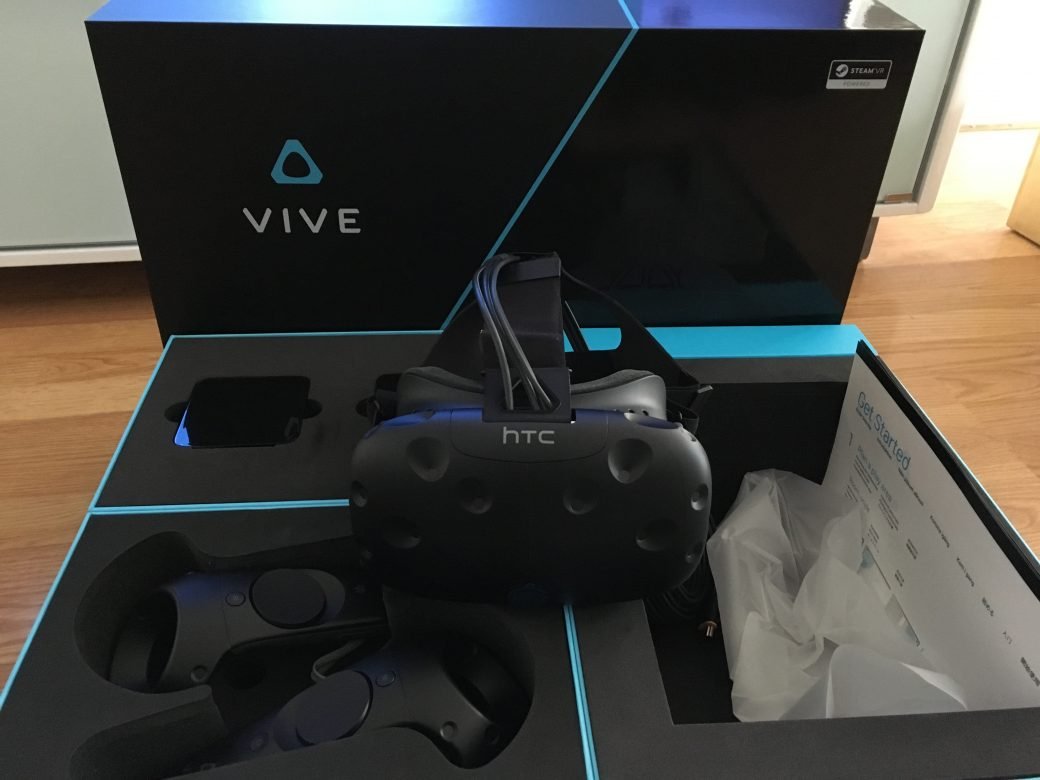
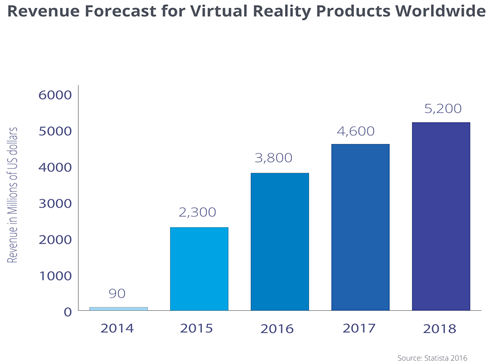
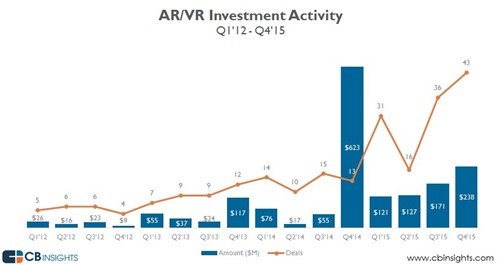
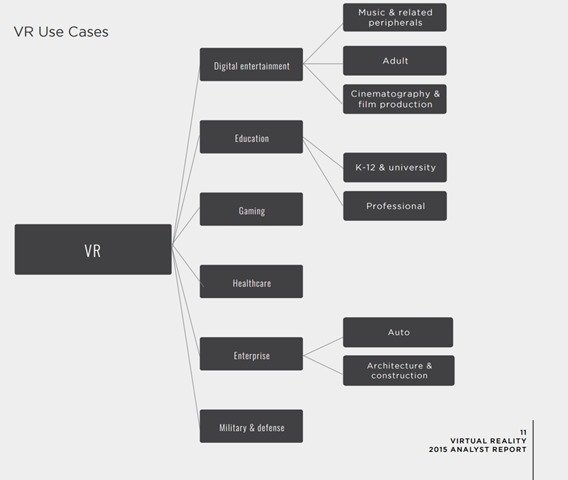
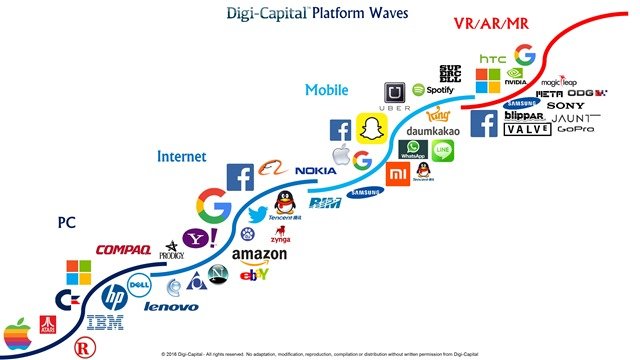


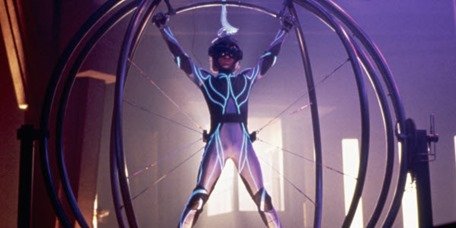
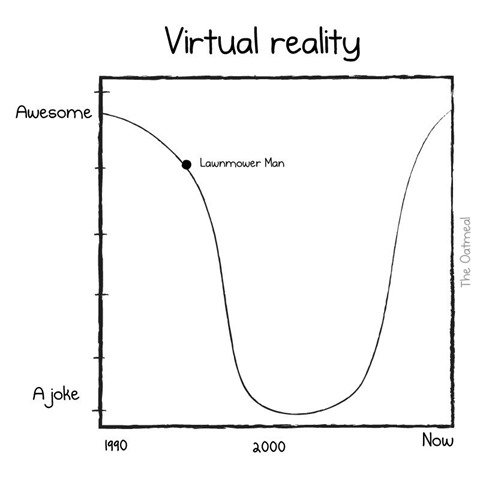
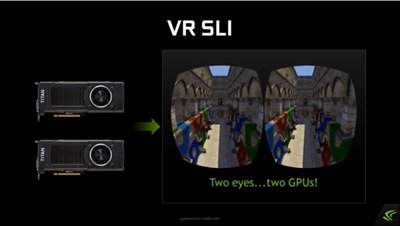
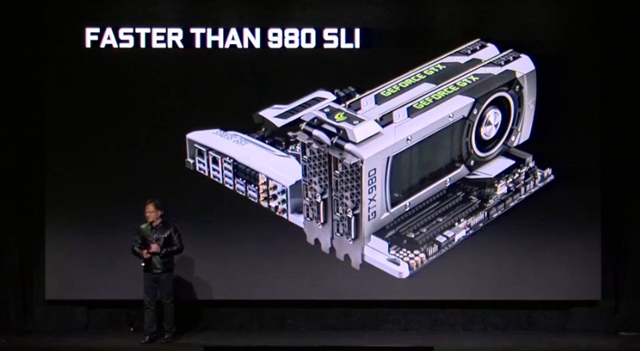
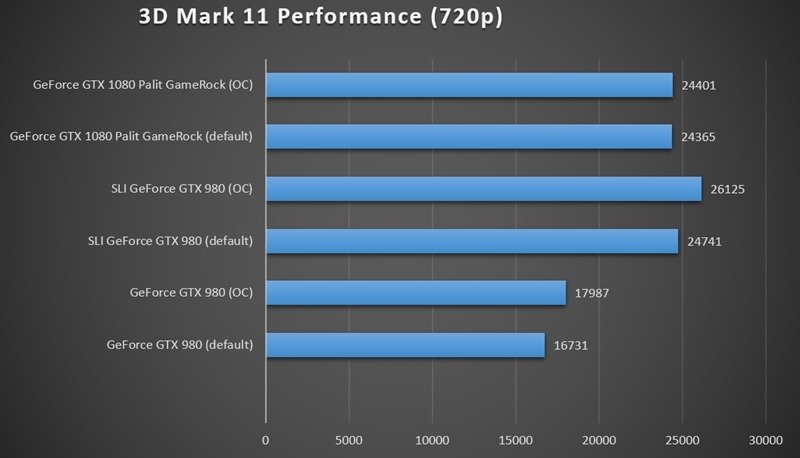
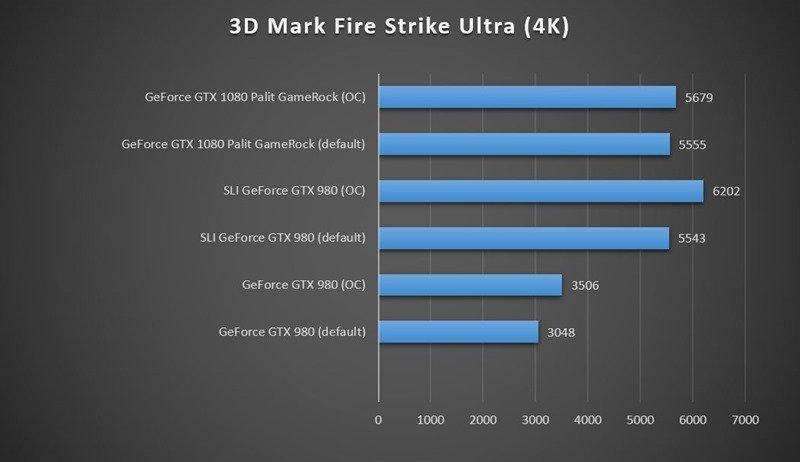
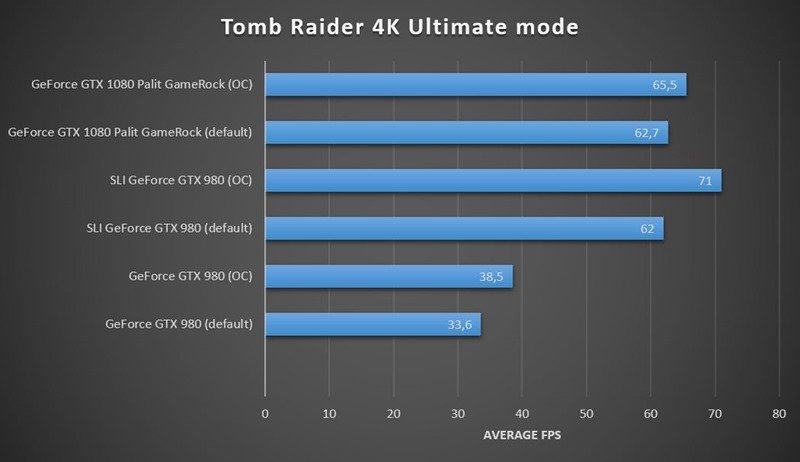
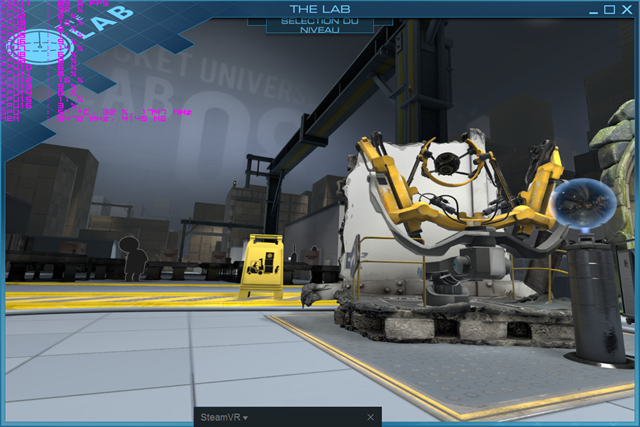
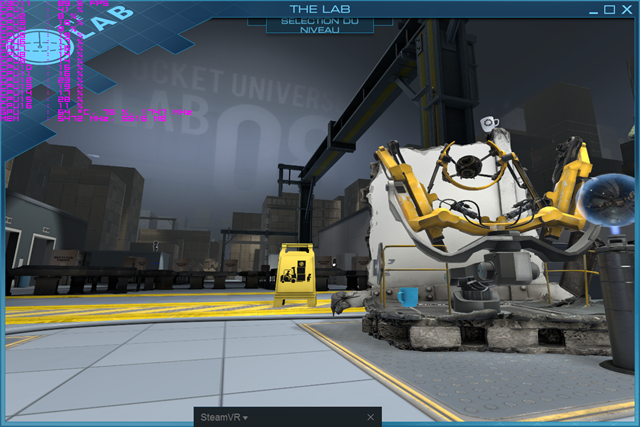
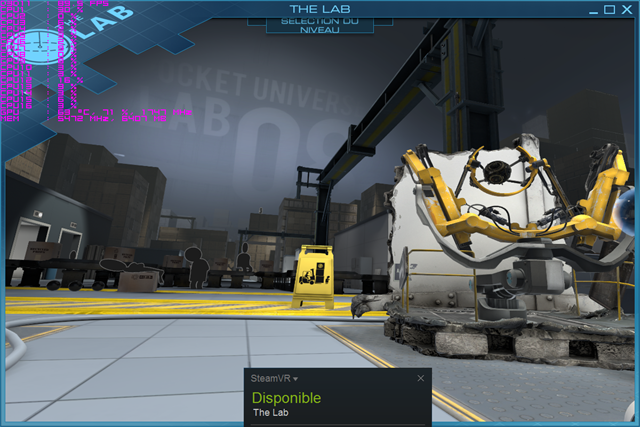
Very nice article, tips and reviews. I’ve am also very happy with my HTC Vive even though I just play with it for 2 or 3 hours. I am a gamer since spectrum time but since 2007 been losing interest in pc games because I believe Crysis 1 was the last true breakthrough in terms of graphics and I blame consoles for that.
So you recommend buying Raw Data? Will it be more expensive when it’s finished? Also, I love horror movies and I believe VR will be a great way to experience that kind of feelings, if you enjoy having them of course. Have you tried Chair in a Room?
Also, the multi-player side VR is great, yes Pool Nation VR is weird but having the chance to play and talk with someone from another side of the world is great. Rec Room is also very good for that. And yes, I’m the guys who forgot to wear the straps and throw the controller to the wall at a very high speed when launching a disc and broke it 😉
Cheers
Lol at the Crysis comment. We’ve come a long, LONG way since Crysis 1. Consoles haven’t done jack other than increase the already booming gaming industry, which is an additive effect, and we have games pushing more polygons than Crysis 1 and better graphics today.
Game developers always understand the restrictions, and they have to work within them. A game developer could easily make a game that puts computers to its knees. Developers as is are poly-crunching every single model to lower than what would be ideal. We’re still ways, ways away from simulating the graphical fidelity of the real world. Take a walk through a park and realize how much micro detail and movement there is in the world, we aren’t close to simulating even a suburb’s amount of tree leaves, unfortunately. Crysis has very nice assets and stellar rendering, but it’s still all smoke and mirrors and has already aged. But it doesn’t matter, because you can still have an insane amount of fun gaming. Anyways, your love of Crysis 1 is keeping you stuck in the past from enjoying everything available today.
But glad to know you’re having a great time in VR!
Very good review! Congrats
I would definitely recommend finishing The Gallery! It sounds like you didn’t get past the first chapter, which I’ve heard some folks getting stuck in. There’s quite a bit of content afterwards which I think is absolutely worth experiencing. It feels like the kind of game Steven Spielberg would have made.
Also, the audio tapes are worth a listen, as they might give you some clues! The Gallery is a well paced story puzzler-not a simple environment explorer. I can’t wait for the next chapter to come out!